

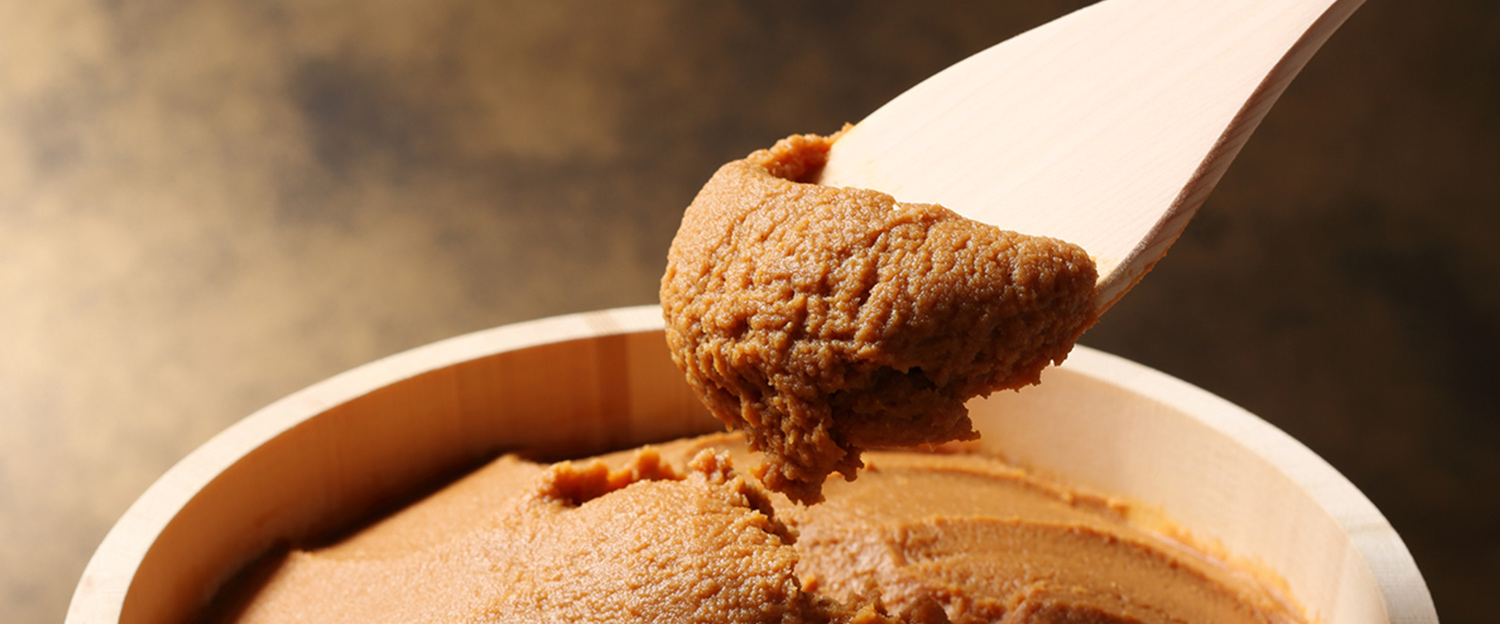
Miso is a traditional food that has supported
the dietary life of the Japanese people
for more than 1,300 years.
While it is a basic seasoning that represents Japan,
it is also a fermented food created by the activity of microorganisms.
Miso can be largely categorized into four types: rice miso, barley miso, soybean miso, and blended miso.
Approximately 80% of miso currently produced in Japan is rice miso.
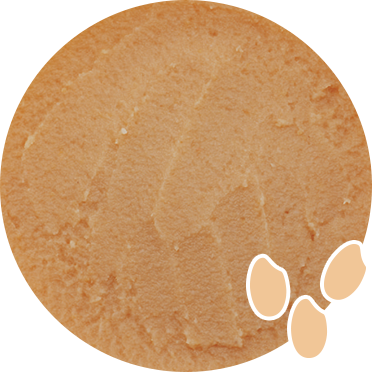
Made with rice, soybeans, and salt.
White miso is also a type of rice miso.
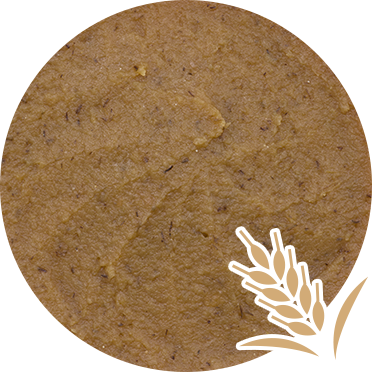
Made of barley, soybeans, and salt.
Main producers are located in the Chugoku, Shikoku, and Kyushu regions.
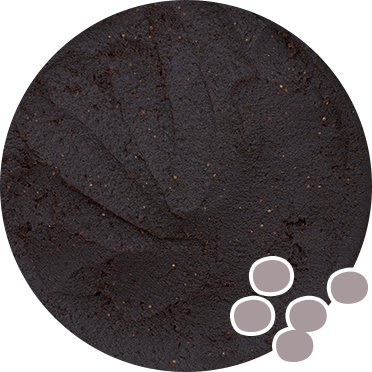
Made of soybeans and salt.
Main producers are located in the Chukyo region.

Made by blending two or three types of rice miso, barley miso, or soybean miso.
Blended miso can also be miso made from a combination of rice koji, barley koji, or soybean koji.
Miso other than rice miso, barley miso, and soybean miso is also categorized as blended miso.

The raw ingredients for miso can be categorized into the three types for rice miso, barley miso, and soybean miso, and blended miso which combines these three types. Rice miso is made by adding rice koji to soybeans, and barley miso by adding barley koji to soybeans. Soybean miso is comprised only of soybeans.
Miso is categorized by flavor, such as sweet or strong. The strength of taste mainly depends on the amount of salt used, but another deciding factor is the koji rate. The koji rate refers to the ratio of rice or barley to the soybeans. If the salt content is held constant, the higher the koji rate, the sweeter the miso will be.
Miso is visually categorized into red miso, light-colored miso, and white miso according to the finished color. Various conditions determine the color of the miso, such as the type of soybean ingredients used, whether the soybeans are boiled or steamed, the amount of koji added, and whether the mixture is stirred during fermentation.
Miso flavor is created in a complex combination of sweetness, saltiness, umami, sourness, bitterness, and astringency.
To create a delicious bowl of miso soup, the components of the flavor must be in harmony with each other, in quality and quantity.
Sweetness, umami, and saltiness are explained below.
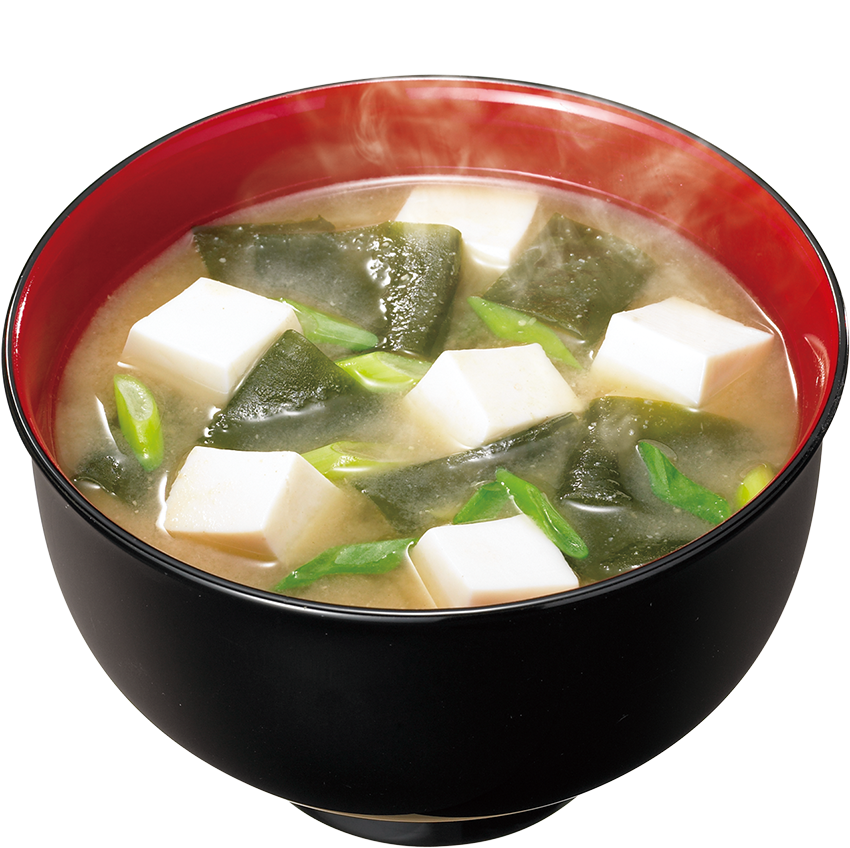
Starch in the rice is broken down by amylase in the koji. A higher rice koji content will result in a sweeter miso.
When miso is allowed to age for a long time, the sugar content is consumed by the yeast and lactic acid bacterium. If the sugar content is dramatically reduced, it creates a so-called "dry" state.
Umami of miso is influenced by amino acids (mainly glutamic acid) formed when the soybean protein breaks down. The umami increases with aging. Umami is not formed solely by glutamic acid, but formed when saltiness, sourness, and sweetness are blended together, and a good aroma and moderate viscosity are added.
As aging progresses and the soybean continues to break down, the stimulation felt on the tongue softens, and the miso develops a broader and richer taste.
Miso that is extremely salty in the early stages of preparation loses some of its saltiness as it matures.
This phenomenon, in which the saltiness perceived by the tongue decreases even through the salt concentration does not change, is called "shio-nare", and is the result of the sour and umami components. Lactate, peptides, and amino acids are all substances that cause "shio-nare".
Additive-free miso is prepared without adding alcohol to the kuradashi miso (miso removed from the aging tank). It is directly filled into the container.
The container may expand during the distribution process, since the yeast activity continues and promotes fermentation.
